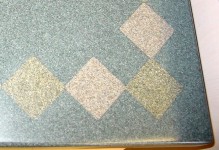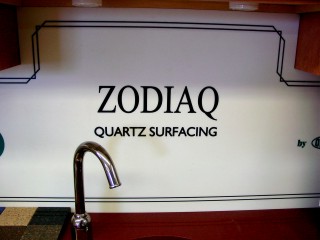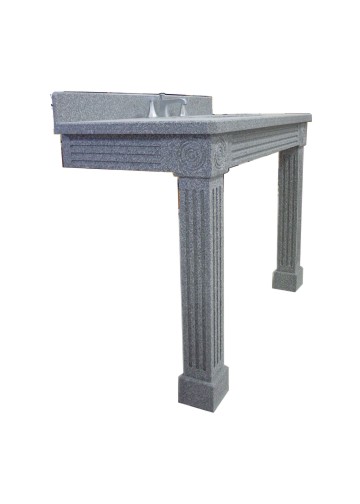
A variety of materials can be used for inlays in the front edge of a solid surface countertop. The most useful, easiest to work and fit, and competent of these is solid surface itself. A solid surface inlay, sandwiched between the top and bottom layers of solid surface, or in a combination of colors and thicknesses, provide a stunning design statement.
Solid surface can be inlaid into the deck, or larger pieces can be seamed together for dramatic scenescapes. We have made water/beach images in tops; mountain, snow, and sky images in wall sheets; single or double borders in decks.

Many liquids that will catalyze into a solid can be used for inlays. Often, joint adhesive is used. Companies will also make their own resin inlay. one of the leaders in solid surface inlay technology is Align-rite.
With the affordability of CNC machinery, inlays have absolutely taken off in terms of what can be done, and the cost of doing so.

Using various types of router bits, including different angled V-groove, and ball end bits, engraving has become a more affordable option for countertops. Solid surface, in particular, has so many possibilities for engraving that a designer should capitalize on it whenever the fancy strikes.
A common example of engraving in a countertop is a recessed drainboard. Sloped toward the sink, it can be almost any shape or style, and either will have the drain grooves routed in the material, or the material removed except for some raised areas in the field (which is more time consuming).
Tile patterns can be routed into the material, with further reliefs carved into assorted sections to create a truly custom look.
Shower walls can still retain a tile look, but without messy grout to clean. The possibilities are limitless.